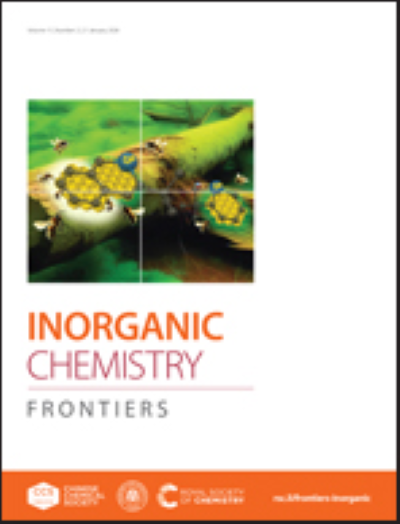Lysosome-targeted Ru(II) complexes as oncosis inducers for boosting photodynamic anticancer therapy
IF 6.1
1区 化学
Q1 CHEMISTRY, INORGANIC & NUCLEAR
引用次数: 0
Abstract
The development of oncosis inducers has been proposed as a promising strategy for cancer therapeutics, owing to their potential to avoid drug resistance and activate antitumor immune responses. Herein, we development two lysosome-targeted oncosis inducers based on Ru(II) complexes (Ru1 and Ru2) with different ancillary ligands for photodynamic anticancer therapy, which exhibited excellent lysosome-targeting capabilities, high singlet oxygen quantum yield and enhanced photodynamic therapy (PDT) activities under acidic conditions. The Ru(II) complexes, acting as pH-responsive photosensitizers (PSs), could selectively target lysosomes, disrupt their membrane integrity, and induce the release of lysosomal contents into the cytoplasm. With the depletion of ATP and the release of Ca2+ from lysosomes into the cytoplasm, oncosis-specific proteins such as porimin and calpain are activated, ultimately leading to oncotic cell death. The photodynamic antitumor efficacy of the Ru(II) complexes was comprehensively assessed through in vitro studies, cellular assays, and 4T1 tumor-bearing mice model. Interestingly, Ru2 could selectively target and kill cancer cells under light irradiation while exerting minimal effects on normal cells. This research not only offers valuable theoretical insights for designing highly efficient PSs to enhance the effectiveness of PDT but also proposes a strategy for developing oncosis inducers through lysosomal damage.溶酶体靶向Ru(II)复合物作为肿瘤诱导剂促进光动力抗癌治疗
由于肿瘤诱导剂具有避免耐药和激活抗肿瘤免疫反应的潜力,因此已被提出作为一种有前途的癌症治疗策略。在此,我们开发了两种基于Ru(II)配合物(Ru1和Ru2)的溶酶体靶向肿瘤诱导剂,并具有不同的辅助配体用于光动力抗癌治疗,它们具有出色的溶酶体靶向能力,高单线态氧量子产率和在酸性条件下增强的光动力治疗(PDT)活性。Ru(II)配合物作为ph响应光敏剂(ps),可以选择性地靶向溶酶体,破坏其膜完整性,诱导溶酶体内容物释放到细胞质中。随着ATP的消耗和溶酶体向细胞质释放Ca2+,肿瘤特异性蛋白如孔蛋白和钙蛋白酶被激活,最终导致肿瘤细胞死亡。通过体外实验、细胞实验和4T1荷瘤小鼠模型综合评价Ru(II)配合物的光动力抗肿瘤作用。有趣的是,Ru2在光照射下可以选择性地靶向和杀死癌细胞,而对正常细胞的影响很小。本研究不仅为设计高效的PSs以提高PDT的有效性提供了有价值的理论见解,而且为通过溶酶体损伤开发肿瘤诱导剂提供了一种策略。
本文章由计算机程序翻译,如有差异,请以英文原文为准。
求助全文
约1分钟内获得全文
求助全文
来源期刊

Inorganic Chemistry Frontiers
CHEMISTRY, INORGANIC & NUCLEAR-
CiteScore
10.40
自引率
7.10%
发文量
587
审稿时长
1.2 months
期刊介绍:
The international, high quality journal for interdisciplinary research between inorganic chemistry and related subjects
 求助内容:
求助内容: 应助结果提醒方式:
应助结果提醒方式:


